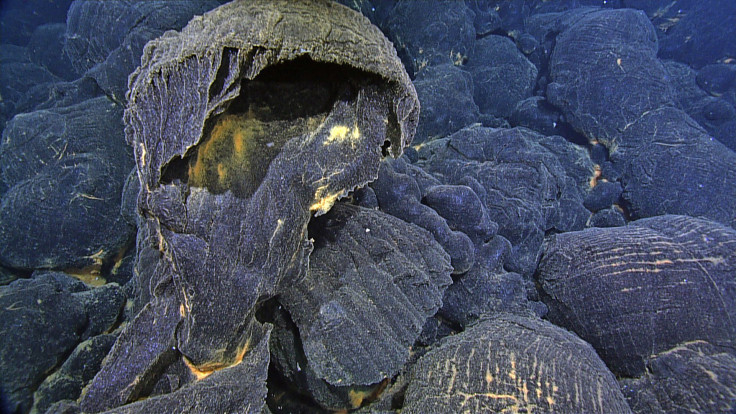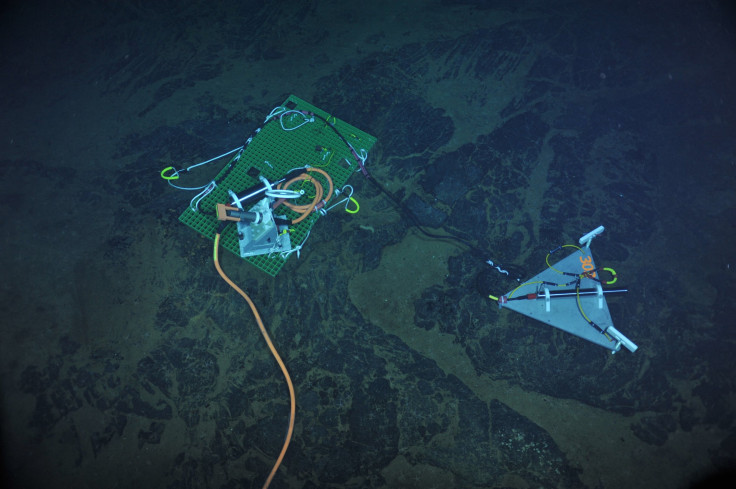Underwater Volcano Eruption Observed In Real Time Helps Understand Geological Phenomenon

The land surface of Earth has about 1,500 potentially active volcanoes, according to the U.S. Geological Survey, but about 75 percent of the planet’s annual magma outflow comes from volcanoes that are underwater. Based on estimates and extrapolation, more than 1 million submarine volcanoes are thought to exist on Earth.
So it would make sense to study these underwater volcanoes, which erupt far more frequently than their land counterparts, to understand how volcanoes work, which in turn could help devise warning systems to minimize the danger they pose.
Axial Seamount is a submarine volcano located 290 miles off the coast of Oregon, and is very well studied. Therefore, scientists were prepared to observe it in real time when it last erupted in April 23, 2015. The data collected using high-tech instruments — part of a larger project called the Ocean Observatories Initiative, funded by the National Science Foundation (NSF) — was presented for the first time Thursday at the ongoing 2016 Fall Meeting of the American Geophysical Union in San Francisco.
The data collected from the observations of the eruption, which lasted nearly a month, has provided scientists “new opportunities to study volcanism and really learn how these systems work,” William Wilcock, a professor of oceanography at the University of Washington, said in a statement. Wilcock is also the lead author of one of the three research papers, based on the new data, published this week.
Rick Murray, director of the NSF’s Division of Ocean Sciences, said in the statement: “Instruments used by Ocean Observatories Initiative scientists are giving us new opportunities to understand the inner workings of this volcano, and of the mechanisms that trigger volcanic eruptions in many environments. The information will help us predict the behavior of active volcanoes around the globe.”

Submarine volcanoes are easier to study, since the ocean crust is usually a lot thinner than under-volcano crust on land. Therefore, the magma chamber is located at a shallower depth, allowing scientists to better predict its exact location. The ocean crust also generates sharper seismic images.
However, observing submarine volcanic eruptions is quite difficult, which is why the new machinery installed is very helpful for science.
A large number of researchers from various institutions around the country were involved in the studies. Two of the studies were published Friday in the journal Science (here and here), while the third appeared Thursday in Geophysical Research Letters.
© Copyright IBTimes 2024. All rights reserved.





















